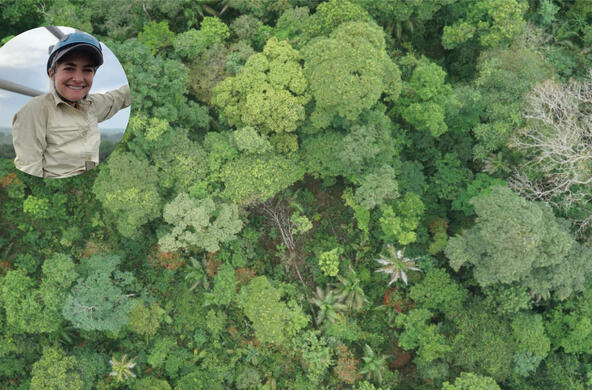It’s mid-December and time for the annual question: Should we get an artificial Christmas tree this year? With so much interest in carbon sequestration and high energy costs, what are the comparative environmental impacts of having a real versus an artificial tree in your living room?
Christmas trees have been popular in the U.S. since the early 1800s, when the tradition was transplanted from Germany. In recent years, Americans have bought nearly 38 million Christmas trees, spending $1.8 billion annually. Nearly one quarter of these were artificial trees, which now include a number of pre-decorated options.
At 6 to 8 feet tall, both varieties weigh about 50 pounds, which is about as much tannenbaum as the average American wants to heft around the house, even once a year. The mass of a real tree is about half carbon, so about 90 pounds of CO2 was taken from Earth’s atmosphere by photosynthesis and accumulated in its wood. (Score 1 for the real tree). The plastic tree is largely produced as a petroleum byproduct from fossil carbon that was removed from the atmosphere perhaps 70 million years ago by marine phytoplankton, the tiny photosynthetic algae of a shallow sea.
The real tree grew in a farm field, preserving a rural economy and with minimal impact on the landscape. The U.S. has about 500,000 acres in Christmas trees, and these tree farms provide modest wildlife habitat. Pruning and other care are significant, but not huge energy costs, to the farmer. In contrast, the artificial tree derives from an oil field, perhaps far away, with significant costs in international shipping, refining, and conversion of oil to plastic. In the production of the plastic tree, about 730 pounds of CO2 were emitted to the atmosphere. (Minus 1 for the artificial tree).
Unless you are one of the hardy few that cut your own tree, both varieties arrive at your house after a considerable distance of highway travel. There is a good chance the artificial tree was made in China. But for our purposes, let’s assume that for equivalent size, the diesel fuel to haul the trees is probably equivalent, except that the artificial tree makes the journey once, whereas the real tree must be replaced each year. (Score 1 for the artificial).
At the end of the holidays, most of us unceremoniously dump our real Christmas tree at the local landfill, where it may be made into mulch. In any case, the tree decomposes, releasing all its previously stored carbon back to the atmosphere as carbon dioxide. (Cancel 1 for the real tree). If you have a yard, it is better to use the tree as part of a brush or compost pile to provide wildlife habitat and enrich your soil. Ultimately, a plastic tree is also likely to be landfilled, except less frequently, and its decomposition may take 1,000 years. We can be thankful for slow decomposition; when we burn plastic Christmas trees, it raises the concentration of carbon dioxide in Earth’s atmosphere, which causes global warming.
Up to this point, the score is about equal, which is also reflected in the price of real and artificial trees. But, unless you change your mind abruptly, you probably anticipate amortizing the investment in an artificial tree over many years. (How many folks have an artificial tree in the attic and a real tree in the living room?) Of course, the best alternative is to buy a live Christmas tree and plant it in the early spring when it can resume its role of removing carbon dioxide from the atmosphere.
So, what are we planting in our living room this year? Real; you can’t beat the scent of a conifer at Christmas.
Adapted from the Poughkeepsie (NY) Journal, 18 December 2011
References
Harding, K.G., J.S. Dennis, H. von Blottnitz, and S.T.L. Harrison. 2007. Environmental analysis of plastic production processes: Comparing petroleum-based polypropylene and polyethylene with biologically-based poly-B-hydroxybutyric acid using life cycle analysis. Journal of Biotechnology 130: 57-66.







